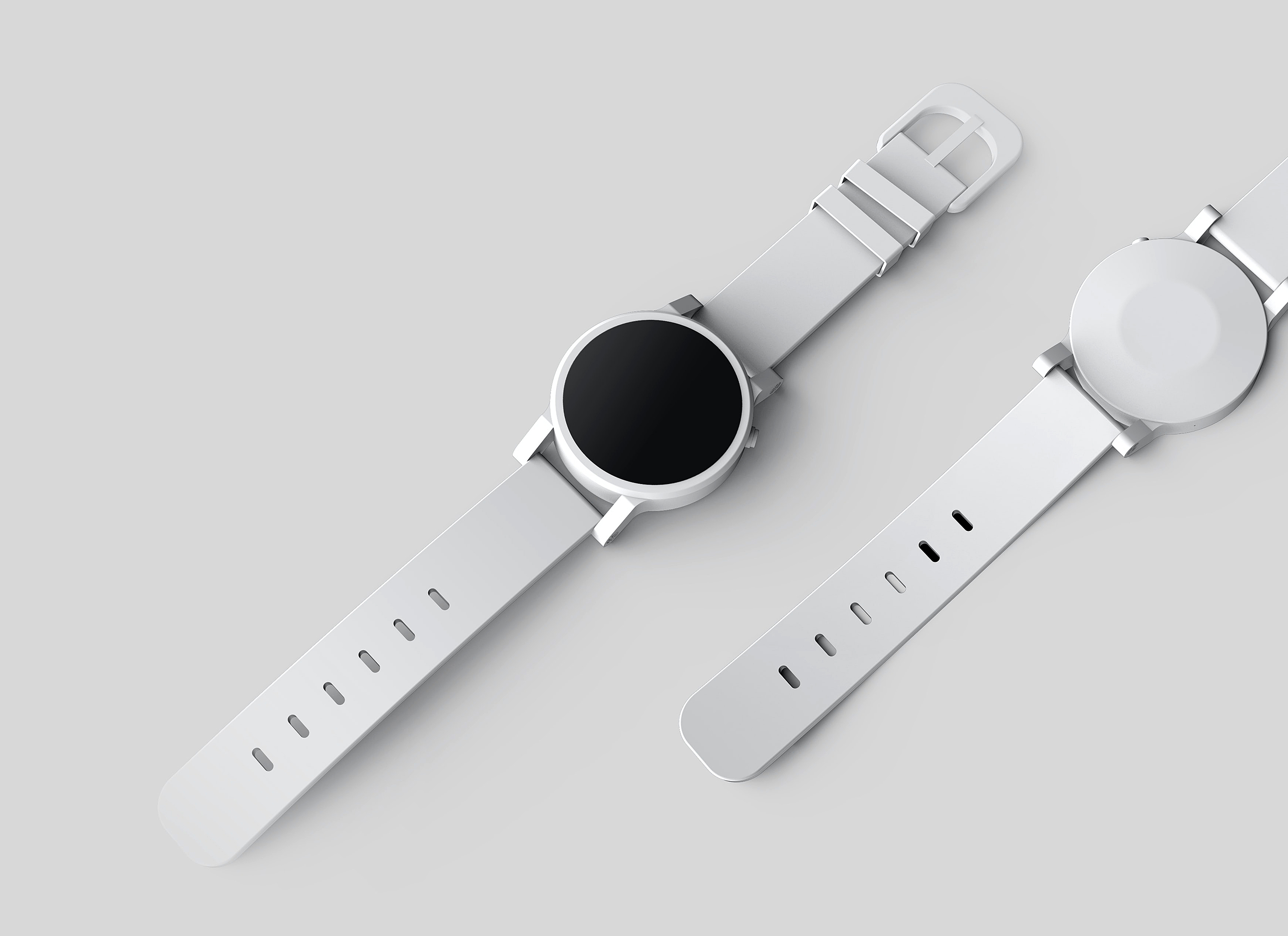|
Emotiv
Emotiv Inc. is a privately held bio-informatics and technology company developing and manufacturing wearable electroencephalography (EEG) products including neuroheadsets, software development kits (SDK), software, mobile apps, and data products. Founded in 2011 by Tan Le and Geoff Mackellar, the company is headquartered in San Francisco, U.S.A. with facilities in Sydney, Hanoi and Ho Chi Minh City. History Tan Le founded a separate company called Emotiv Systems with Nam Do, Allan Snyder, and Neil Weste, in Australia in 2003. The work resulted in the first version of the EPOC neuroheadset released in 2009, one of the first mobile EEG device available to the market. In 2010, Tan Le split from the partnership to establish a US entity, Emotiv Lifesciences Inc. with Geoffrey Mackellar. In December 2013, Emotiv Lifesciences officially changed its name to Emotiv Inc. The original EPOC has been used in research and shown to deliver acceptable quality EEG for research purposes. In ... [...More Info...] [...Related Items...] OR: [Wikipedia] [Google] [Baidu] |
Emotiv Systems
Emotiv Systems is an Australian electronics innovation company developing technologies to evolve human computer interaction incorporating non-conscious cues into the human-computer dialogue to emulate human to human interaction. Developing brain–computer interfaces (BCIs) based on electroencephalography (EEG) technology, Emotiv Systems produced the EPOC near headset, a peripheral targeting the gaming market for Windows, OS X and Linux platforms. The EPOC has 16 electrodes and was originally designed to work as a BCI input device. Emotive Systems Pty Ltd was founded in 2003 by technology entrepreneurs Tan Le, Nam Do, Allan Snyder, and Neil Weste. Emotiv Research Pty Ltd was founded in 2011 also by Tan Le. Nam Do, Allan Snyder, and Neil Weste are not affiliated with this business. This business has operated in America under the name Emotiv Lifesciences Inc until December 2013 when it became Emotiv Inc. It is not affiliated with Emotiv Systems. See also * Electroencephalogr ... [...More Info...] [...Related Items...] OR: [Wikipedia] [Google] [Baidu] |
Brain–computer Interface
A brain–computer interface (BCI), sometimes called a brain–machine interface (BMI), is a direct communication link between the brain's electrical activity and an external device, most commonly a computer or robotic limb. BCIs are often directed at researching, Brain mapping, mapping, assisting, Augmented cognition, augmenting, or repairing human Cognitive skill, cognitive or Sensory-motor coupling, sensory-motor functions. They are often conceptualized as a human–machine interface that skips the intermediary of moving body parts (e.g. hands or feet). BCI implementations range from non-invasive (EEG, Magnetoencephalography, MEG, MRI) and partially invasive (ECoG and endovascular) to invasive (microelectrode array), based on how physically close electrodes are to brain tissue. Research on BCIs began in the 1970s by Jacques Vidal at the University of California, Los Angeles (UCLA) under a grant from the National Science Foundation, followed by a contract from the Defense Adva ... [...More Info...] [...Related Items...] OR: [Wikipedia] [Google] [Baidu] |
Neil Weste
Neil H. E. Weste (born 1951), is an Australian inventor and engineer, noted for having designed a 2-chip wireless LAN implementation and for authoring the textbook ''Principles of CMOS VLSI Design''. He has worked in many aspects of integrated-circuit design and was a co-founder of Radiata Communications. Life Weste grew up in the Riverland Region of South Australia. He received a BSc in Physics in 1974, a BE in 1976, a Ph.D. in 1978, and a Doctor of Engineering (honoris cause) in 2014, all from the University of Adelaide. Weste worked at a number American technology firms, including Bell Telephone Laboratories, Microelectronics Center of North Carolina, Symbolics, Agile Systems, and TLW. He was also at Duke University and the University of North Carolina. In 1995 he returned to Australia as a professor at Macquarie University. In 1997 he started Radiata Communications with David Skellern where the first 802.11a chip was designed. The company was acquired by Cisco Systems in ... [...More Info...] [...Related Items...] OR: [Wikipedia] [Google] [Baidu] |
Tan Le
Tan Le (Vietnamese: ''Lê Thị Thái Tần'', born 20 May 1977) is a Vietnamese-born Australian telecommunications entrepreneur and a co-founder of Emotiv. She was named the 1998 Young Australian of the Year. Career As president of the Vietnamese Community of Footscray Association, she made a number of contributions to charities and newspapers throughout Melbourne. Le is a co-founder of software company Emotiv which specialises in electroencephalography (EEG) headsets. Le has spoken of her desire to ensure the company's products are affordable enough for the consumer. She believes that by democratising the technology, there is a greater chance of innovation from individuals, research groups and companies. In February 2020, Le published her first book, ''The NeuroGeneration: The new era of brain enhancement revolutionising the way we think, work and heal.'' Recognition In 1998, Le was named Young Australian of the Year and one of Australia's 30 Most Successful Women Under 30 ... [...More Info...] [...Related Items...] OR: [Wikipedia] [Google] [Baidu] |
Allan Snyder
Allan Whitenack Snyder (born 1942) is the director of the Centre for the Mind at the University of Sydney, Australia where he also holds the 150th Anniversary Chair of Science and the Mind. He is a co-founder of Emotiv Systems and winner of the International Australia Prize in 1997 and the Marconi Prize in 2001 for his contributions to optical physics. Snyder is also the Creator and Chairman of the ''What Makes a Champion?'' forum, an official Olympic cultural event first held at the Sydney 2000 Olympic Games. He is also the Chair of Research on the MindChamps World Research, Advisory and Education Team, with a focus on neuroscience. Snyder's research career began in optical physics. More recently, he has worked on mind sciences. He has appeared on television demonstrating how transcranial magnetic stimulation to the left temporal lobe can induce savant-like skills. Savant hypothesis Snyder is interested in understanding savants. In savants, according to Snyder, the top lay ... [...More Info...] [...Related Items...] OR: [Wikipedia] [Google] [Baidu] |
Electroencephalography
Electroencephalography (EEG) is a method to record an electrogram of the spontaneous electrical activity of the brain. The biosignal, bio signals detected by EEG have been shown to represent the postsynaptic potentials of pyramidal neurons in the neocortex and allocortex. It is typically non-invasive, with the EEG electrodes placed along the scalp (commonly called "scalp EEG") using the 10–20 system (EEG), International 10–20 system, or variations of it. Electrocorticography, involving surgical placement of electrodes, is sometimes called Electrocorticography, "intracranial EEG". Clinical interpretation of EEG recordings is most often performed by visual inspection of the tracing or quantitative EEG, quantitative EEG analysis. Voltage fluctuations measured by the EEG bioamplifier, bio amplifier and electrodes allow the evaluation of normal Brain activity and meditation, brain activity. As the electrical activity monitored by EEG originates in neurons in the underlying Huma ... [...More Info...] [...Related Items...] OR: [Wikipedia] [Google] [Baidu] |
GitHub
GitHub () is a Proprietary software, proprietary developer platform that allows developers to create, store, manage, and share their code. It uses Git to provide distributed version control and GitHub itself provides access control, bug tracking system, bug tracking, software feature requests, task management, continuous integration, and wikis for every project. Headquartered in California, GitHub, Inc. has been a subsidiary of Microsoft since 2018. It is commonly used to host open source software development projects. GitHub reported having over 100 million developers and more than 420 million Repository (version control), repositories, including at least 28 million public repositories. It is the world's largest source code host Over five billion developer contributions were made to more than 500 million open source projects in 2024. About Founding The development of the GitHub platform began on October 19, 2005. The site was launched in April 2008 by Tom ... [...More Info...] [...Related Items...] OR: [Wikipedia] [Google] [Baidu] |
Electronics Companies Established In 2011
Electronics is a scientific and engineering discipline that studies and applies the principles of physics to design, create, and operate devices that manipulate electrons and other electrically charged particles. It is a subfield of physics and electrical engineering which uses active devices such as transistors, diodes, and integrated circuits to control and amplify the flow of electric current and to convert it from one form to another, such as from alternating current (AC) to direct current (DC) or from analog signals to digital signals. Electronic devices have significantly influenced the development of many aspects of modern society, such as telecommunications, entertainment, education, health care, industry, and security. The main driving force behind the advancement of electronics is the semiconductor industry, which continually produces ever-more sophisticated electronic devices and circuits in response to global demand. The semiconductor industry is one of the global ... [...More Info...] [...Related Items...] OR: [Wikipedia] [Google] [Baidu] |
Wearable Devices
Wearable technology is any technology that is designed to be used while worn. Common types of wearable technology include smartwatches, fitness trackers, and smartglasses. Wearable electronic devices are often close to or on the surface of the skin, where they detect, analyze, and transmit information such as vital signs, and/or ambient data and which allow in some cases immediate biofeedback to the wearer. Wearable devices collect vast amounts of data from users making use of different behavioral and physiological sensors, which monitor their health status and activity levels. Wrist-worn devices include smartwatches with a touchscreen display, while wristbands are mainly used for fitness tracking but do not contain a touchscreen display. Wearable devices such as activity trackers are an example of the Internet of things, since "things" such as electronics, software, sensors, and connectivity are effectors that enable objects to exchange data (including data quality) through the ... [...More Info...] [...Related Items...] OR: [Wikipedia] [Google] [Baidu] |
Macquarie University
Macquarie University ( ) is a Public university, public research university in Sydney, New South Wales, Australia. Founded in 1964 by the New South Wales Government, it was the third university to be established in the Sydney metropolitan area. Established as a verdant universities, verdant university, Macquarie has four faculties, as well as the Macquarie University Hospital, which are on the university's maiWallumattagal campusin the suburb of Macquarie Park, New South Wales, Macquarie Park. The university is the first in Australia to fully align its degree system with the Bologna Accord. History 20th century The idea of founding a third university in Sydney was flagged in the early 1960s when the New South Wales Government formed a committee of enquiry into higher education to deal with a perceived emergency in university enrolments in New South Wales. During this enquiry, the Senate of the University of Sydney put in a submission which highlighted 'the immediate need t ... [...More Info...] [...Related Items...] OR: [Wikipedia] [Google] [Baidu] |






